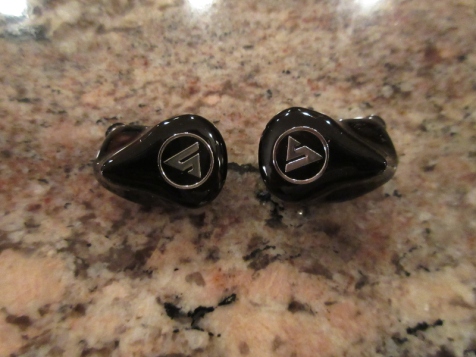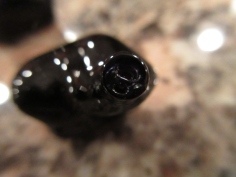A Natural Surprise!
PROS: natural tonality, good retrieval of details, comfortable fit and great sound isolation, 2pin removable cable.
CONS: cheap accessories, nozzle could benefit from a bigger lip.
The product was provided to me free of charge for the review purpose in exchange for my honest opinion.
Manufacturer website: HiFi Boy, available for sale on Penon Audio.
Intro.
While I have been focusing lately on higher end IEMs, sometimes I come across a budget gem which deserves a spotlight. I know that for some people “budget” will mean a different thing, but relative to many $2k-$3k IEMs I had the opportunity to test and to review, this $159 IEM from HiFi-Boy is quite affordable and has a great price performance ratio, along with a very addictive natural tonality.
Not much info is available about HiFi-Boy, except that it was launched by Chengdu Fallante Technology in China and its CEO, Mr. Chen, wanted to create a cost-effective high-quality IEM. In my opinion he achieved that goal, but I must give a credit to Penon Audio for featuring this IEM in their store so that audio enthusiast outside of China can discover it. Now, after spending a month with it, I want to share my experience using the latest updated (new 2pin version instead of the original mmcx) HiFi-Boy OS v3 (OSV3) iems.
Unboxing and Accessories.
The unboxing experience here is basic: a colorful sleeve over an average size sturdy box with magnetic flip cover. Once you remove the sleeve and open the box, you will find a foam cutout, securely holding a travel case and a few accessories.
Accessories are basic as well. You get a set of 3 pairs of silicone eartips (S/M/L). Surprisingly, I found the large size pair to give me the best fit with a perfect isolation, so no need to tip roll. You also get a roomy travel case, bigger than a typical round clamshell, with enough space for an aftermarket cable and a few other accessories. It’s a cheap case, but very practical.
Obviously, a removable cable is also a part of accessories which I’m going to talk about it in the next section of the review. Also, included were an airplane adapter and 1/4″ adapter, which I consider to be filler accessories; perhaps someone will find it useful.
Cables.
The included stock cable is very flexible, thin, and lightweight. The wires are silver plated copper with 5N purity of OFC core. The cable has 4 separate conductors, inner-twisted and not braided, with a clear insulation sleeve which reveals the silver plating.
The headphone plug is gold plated single ended 3.5mm with an aluminum housing that has a nice grip and a short strain relief. Y-splitter is a small transparent rubbery mold, and chin slider is also transparent, rubbery. There is no memory wire, instead you have a pre-shaped flexible earhook piece formed by a clear silicone heat-shrink tube. 2pin connectors have a clear rubbery housing and red/blue dots for a quick id of Right/Left sides.
I did find 2pin connector socket in OSV3 to be a little tight and slightly angled (very slightly). As a result, be careful not to force the connector too hard when plugging in cable.
Overall, it’s a nice upgraded stock cable with a typical budget SPC wire performance. Since I have access to many different aftermarket cables, including Penon’s own OS849 and GS849, I wanted to see if the sound of OSV3 will scale up using different wires.
Aftermarket cable pair up.
stock vs Ares II – soundstage is a little wider and overall sound is tighter and faster. I can hear the bass being faster and more controlled, especially when it comes to separation with lower mids. Lower mids still have full body, but a little leaner, with notes being not as thick. Upper mids are more forward, making sound sig more balanced, with improved retrieval of details. Treble is very similar.
stock vs Ref8 – soundstage is a little wider and overall sound is tighter and faster. I can hear bass being faster but not as fast as Ares II. Still, it’s an improvement over the stock cable. Lower mids are a little bit leaner, upper mids have improved retrieval of details, a little more forward, but not as much as Ares II. Treble has a little more sparkle.
stock vs OS849 – soundstage is a little wider and overall sound is tighter and faster. The bass quantity is very similar and maybe a touch more neutral in comparison; mids are a little more forward, making overall signature more balanced with an improved multi-driver coherency. The biggest difference here is upper mids/lower treble being a little smoother and a little less harsh, making the upper end to sound more natural. This is probably my favorite pair up.
stock vs GS849 – wider soundstage, as expected, and a tighter/faster sound due to a blacker background, just like with other cables. But I hear a little different effect on bass, where in addition to being faster and tighter, it’s also a little more elevated with a harder punch. Mids have more clarity, improved retrieval of details, but their presentation is similar to a stock cable, still being a little pushed back. Treble has more sparkle and more airiness. This cable pushes OSV3 performance more toward v-shaped sound sig due to an elevated bass and a brighter treble.
OS849 vs GS849.

Design.
OSV3 has a 3-way hybrid design with a single 7mm dynamic driver for lows and 2BAs, one for mids and highs and the other one for ultra-highs. I assume it has a 3-way internal crossover, though to my surprise I can only see 2 bores in the nozzle which suggests that drivers are partitioned into two groups, under my assumption with each sound tube going to one of the bore openings. There is also a pinhole vent on the side of the shell, for a dynamic driver tuning. I didn’t see any pinhole around the nozzle, and can also confirm no driver flex. The faceplate has a HiFi-Boy symbol design, where you also have a selection of either all black shells, or red/blue shells according to right/left sides.
The ergonomics of the shell itself is what I call a custom-universal since it has a universal nozzle for eartips, and yet, it’s sculptured to go into concha area of the ear to give you a more comfortable and secure fit, similar to StageDiver and iBasso iems. The shell is very compact, and according to manufacture, made from a resin material. My only comment here is that a tip of the nozzle doesn’t have a big enough lip to hold on securely to eartips. Of course, it all depends on the eartip selection, but while tip-rolling, some of the eartips ended up in my earcanal after removing the shell. For me personally it’s not a showstopper since I end up using stock eartip which have a very tight grip.
Another thing worth mentioning is that with a proper eartip selection, I was able to achieve a very good passive noise isolation. It was just perfect to tune out outside noise so I can enjoy the music.
The fit.

Page 2: Sound analysis, Comparison, Pair-up, and Conclusion.





















